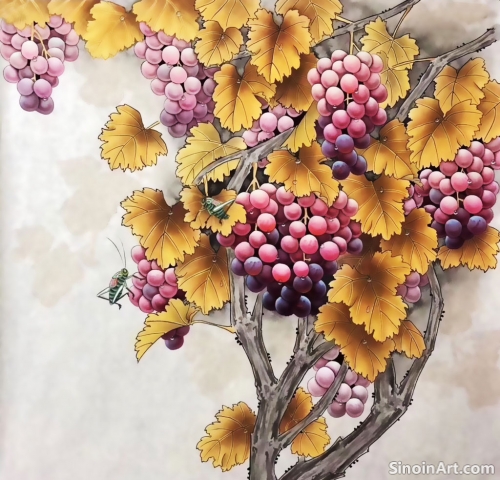Gongbi Painting and its Relationship to Song Dynasty Aesthetics
|
The Song Dynasty (960-1279) is often considered the golden age of Gongbi painting, and the aesthetic principles and stylistic preferences of this era have had a lasting influence on the art form. The Song Dynasty style is a significant period for the art form, and it continues to influence the style and content of contemporary works.  The emphasis on realism and meticulous detail that defines Gongbi painting reached new heights during the Song Dynasty. Artists of this period created works that were both technically masterful and visually compelling, capturing the essence of their subjects with remarkable precision. The detail and accuracy of this period is still a model for many contemporary artists.  The Song Dynasty was also a time of great artistic innovation, with artists exploring new techniques and materials, and pushing the boundaries of what was possible in the art form. The developments of the Song Dynasty continue to inform the practices and techniques of the art form.  The subject matter of Gongbi painting during the Song Dynasty often reflected the courtly interests of the time. Court painters often depicted scenes of imperial life, as well as the natural beauty of flowers and birds. The choices of subject often reflected the interests and values of the ruling class. The importance of symbolism in Gongbi painting also reached new heights during the Song Dynasty, with artists using carefully chosen motifs and colors to convey cultural meanings and philosophical ideas. The choices of symbols and colors was more carefully codified during this period. The aesthetic ideals of the Song Dynasty continue to resonate with contemporary Gongbi artists, serving as a source of inspiration and a reminder of the importance of technical skill, artistic sensibility, and a deep appreciation for the beauty of the natural world. The ideals of the Song Dynasty continue to inform the work and techniques of contemporary artists. |
Tag : Song Dynasty art, Gongbi history, Chinese painting history, traditional art styles, art influence
Related information
- A Historical Journey: The Origins of Gongbi Painting
- The Use of Gold Leaf in Gongbi: Adding a Touch of Opulence
- Gongbi Color Techniques: Layering and Luminosity
- The Exquisite World of Gongbi: A Detailed Introduction
- Gongbi and the Court: Patronage and Artistic Standards in Imperial China
This article traces the historical development of Gongbi painting from its early origins to its modern resurgence, highlighting its evolution across dynasties and its place in Chinese art history.
Discusses the use of gold leaf in Gongbi painting, its application techniques, symbolism, and contribution to the opulence and visual impact of the art.
Color, while carefully controlled, plays a vital role in creating the refined beauty of Gongbi painting. Unlike the spontaneous use of color in Xieyi, Gongbi artists employ a meticulous approach, building up their colors through numerous thin layers, and creating a sense of depth, luminosity, and subtle gradations of tone. This approach is a hallmark of the Gongbi style and contributes to the richness of its visual effects.
A comprehensive introduction to Gongbi painting, highlighting its detailed nature, historical significance, common subjects, and continued relevance.
The history of Gongbi painting is intrinsically linked to the imperial courts of China, where it flourished under the patronage of emperors and the elite classes. The demand for highly detailed and realistic depictions of the natural world and court life led to the development of the meticulous techniques and refined aesthetic characteristic of the Gongbi tradition. This patronage significantly shaped the evolution and preservation of this distinctive style.